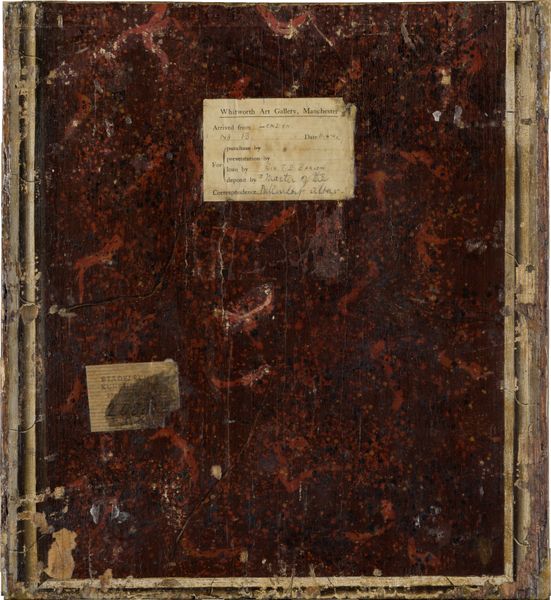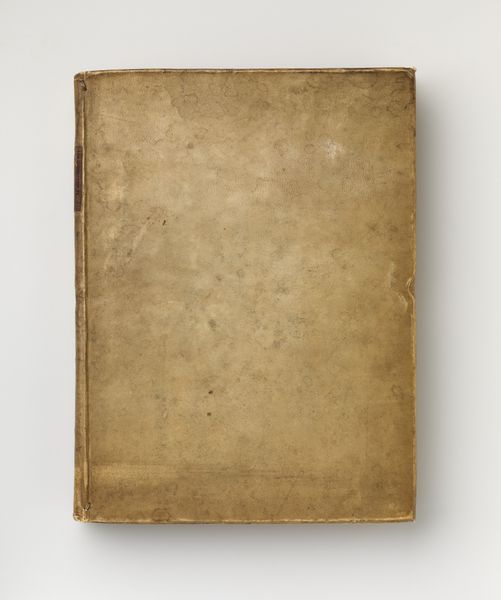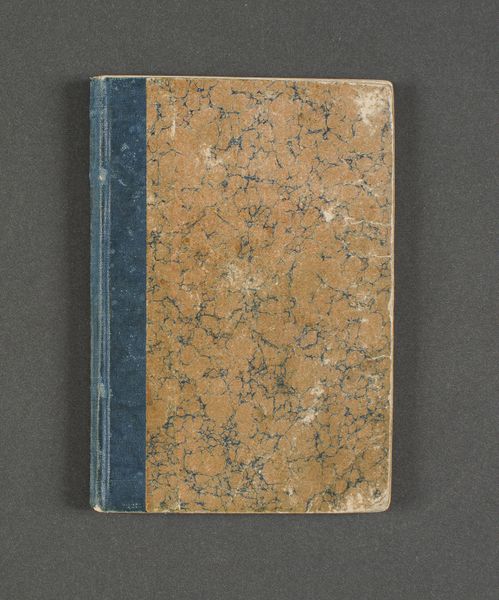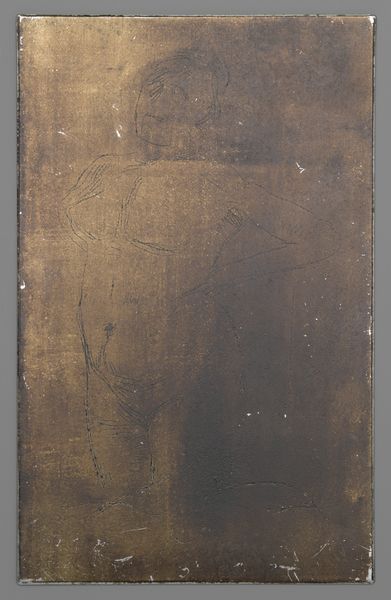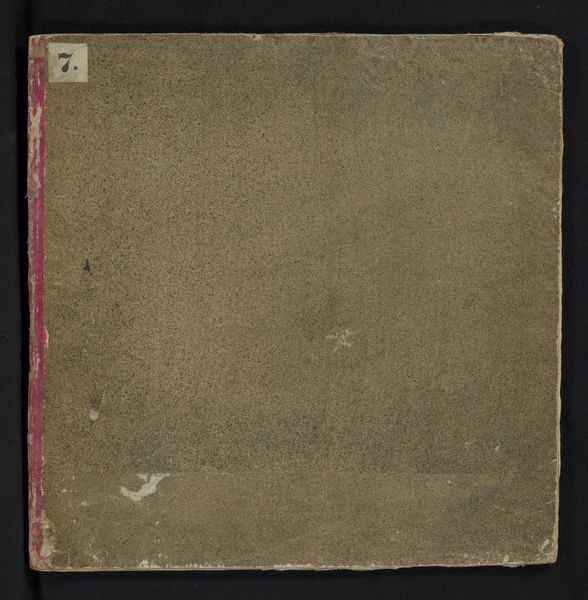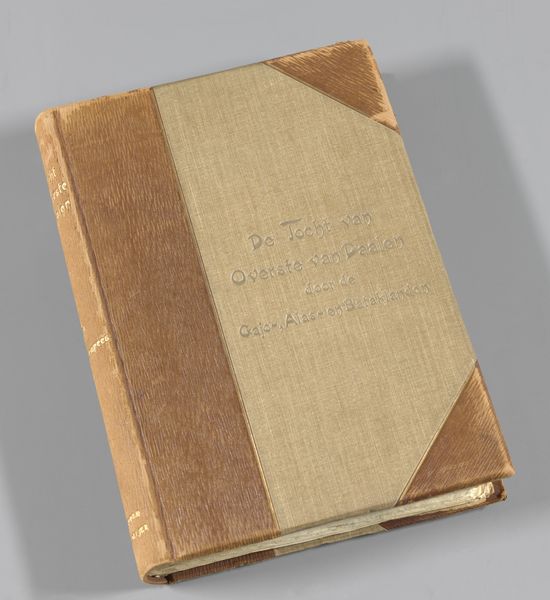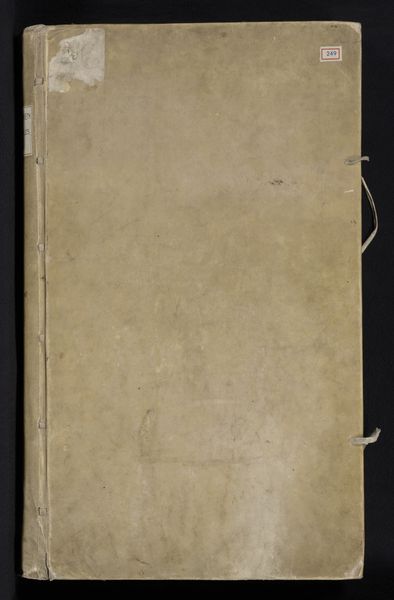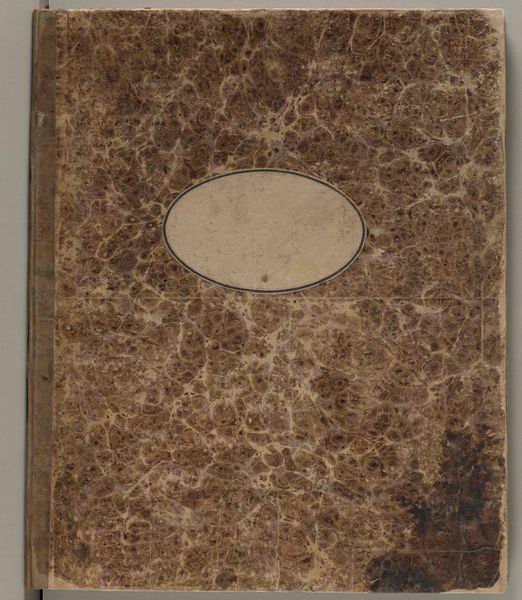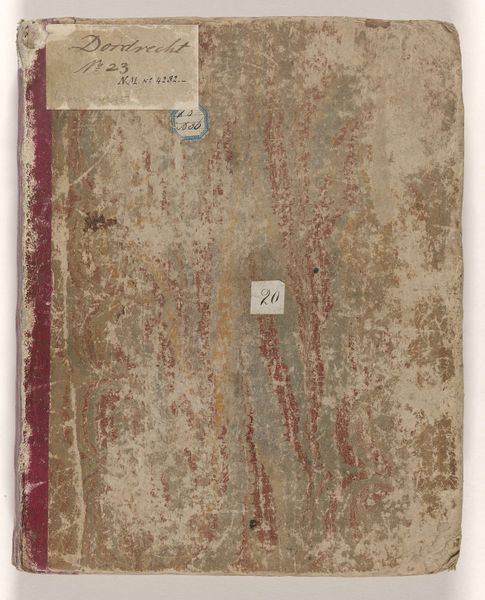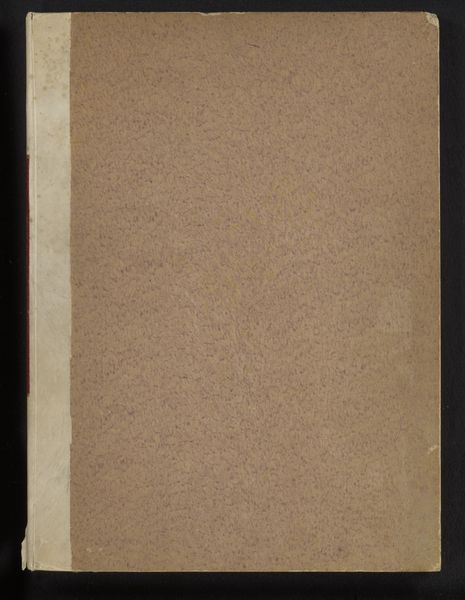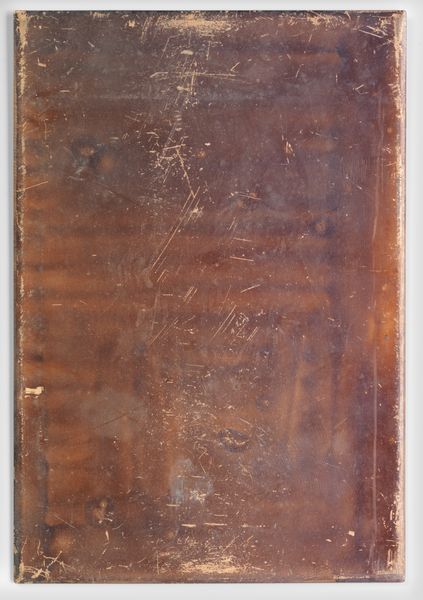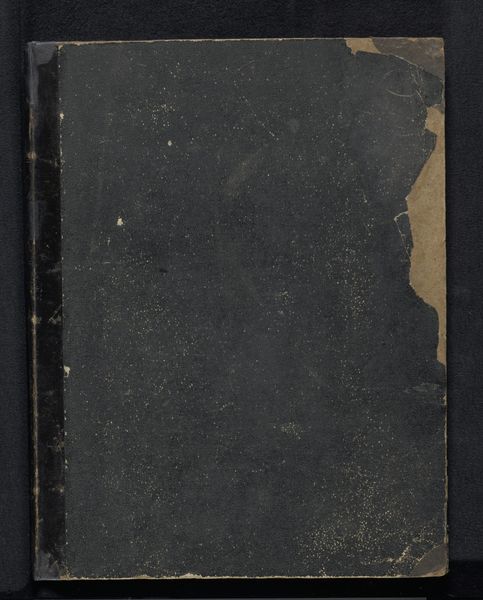
Achterkant van het schilderij met het portret van Rutger Jan Schimmelpenninck (1761-1825) 1771 - 1837
0:00
0:00
drawing, paper
#
portrait
#
drawing
#
dutch-golden-age
#
paper
#
romanticism
#
academic-art
Dimensions: height 45.5 cm, width 37.2 cm, depth 0.7 cm
Copyright: Rijks Museum: Open Domain
Curator: Well, here we have something rather… unconventional. This piece from the Rijksmuseum is titled "Achterkant van het schilderij met het portret van Rutger Jan Schimmelpenninck (1761-1825)," dating roughly from 1771 to 1837. In English, that translates to "The back of the painting with the portrait of Rutger Jan Schimmelpenninck." Editor: My initial reaction is...intrigue tinged with a little bit of "wait, really?". It's like being invited backstage at the theatre and only seeing the raw mechanics that create the show! It’s almost austere with the faded brown of the paper and a minimalist kind of presentation. I also see there are notes on tacked to the paper in the corners? Curator: Precisely! And those details are incredibly revealing. This drawing on paper shows all the support structure, with visible annotations and mounting marks which were normally hidden from view. This becomes art about artifice itself. Editor: Which transforms our understanding from solely aesthetics to mechanics. This creates something special! Does viewing this, do we feel any sort of empathy for Schimmelpenninck or even for the artist laboring away? We now feel the history and context behind what must be an astounding image of a powerful figure. I mean, imagine the stories it could tell, all the secrets it’s absorbed over centuries! Curator: That is the curious power of the piece. By exposing the normally concealed aspects of art production—the backing, notes, aging—it reveals so much of its story. You touched on empathy. It shifts our focus from idealized representation to an awareness and acknowledgement of mortality. Editor: That resonates. Seeing the artist's notes makes this strangely… human, wouldn't you say? This presentation—like peeling back the layers of history or personality to what lies behind. The vulnerability of exposure gives the audience such an exclusive intimacy. Curator: Absolutely. And beyond the intimate access that you noticed, it speaks to the evolving role of museums. It can make us question conventional notions of art historical display. Editor: Who knew the back of a painting could be so engaging? Curator: Indeed. In its unique way, it provokes us to engage more actively with all facets of artistry!
Comments
No comments
Be the first to comment and join the conversation on the ultimate creative platform.

